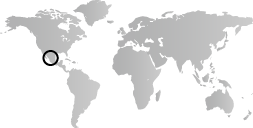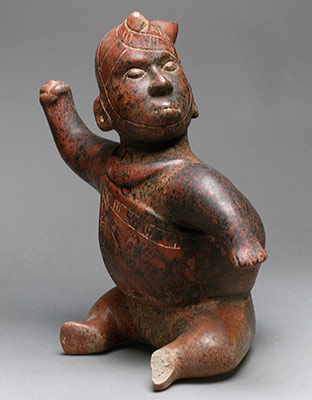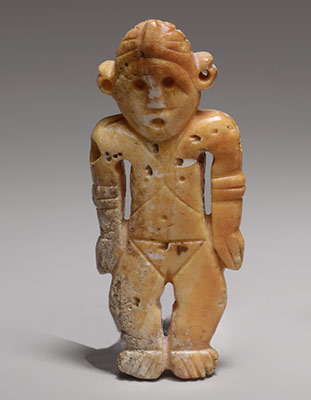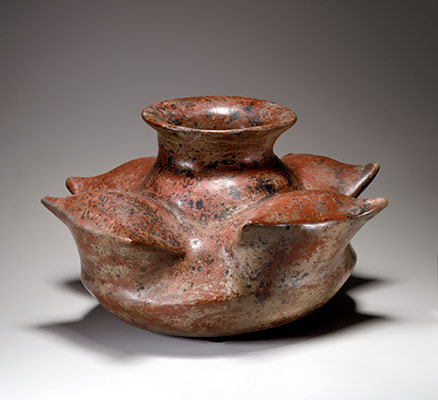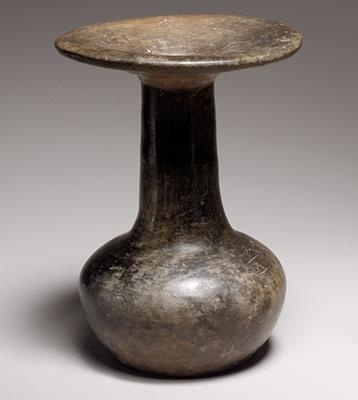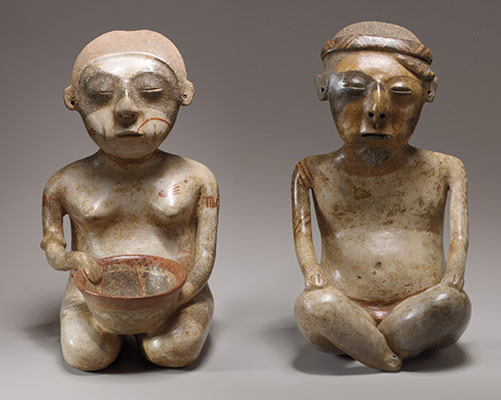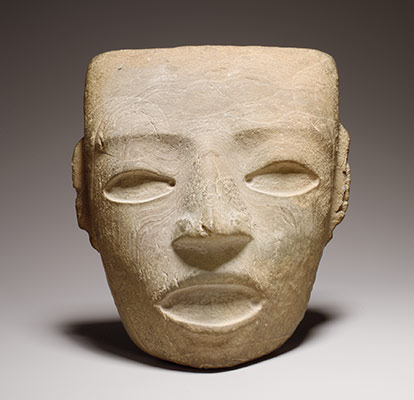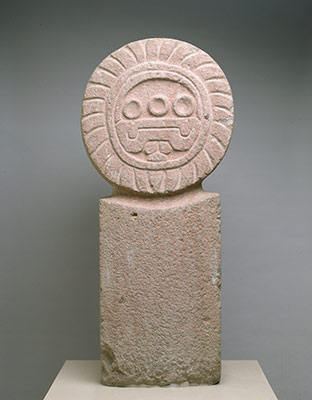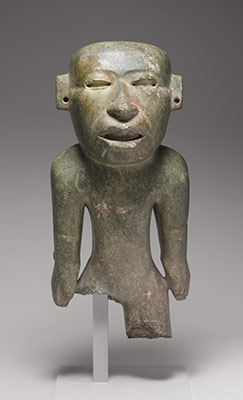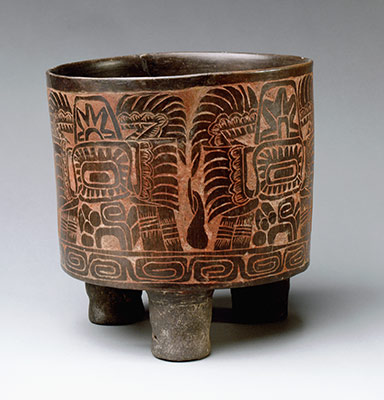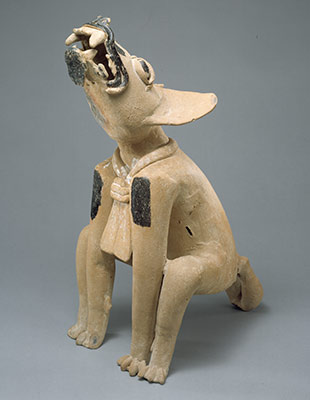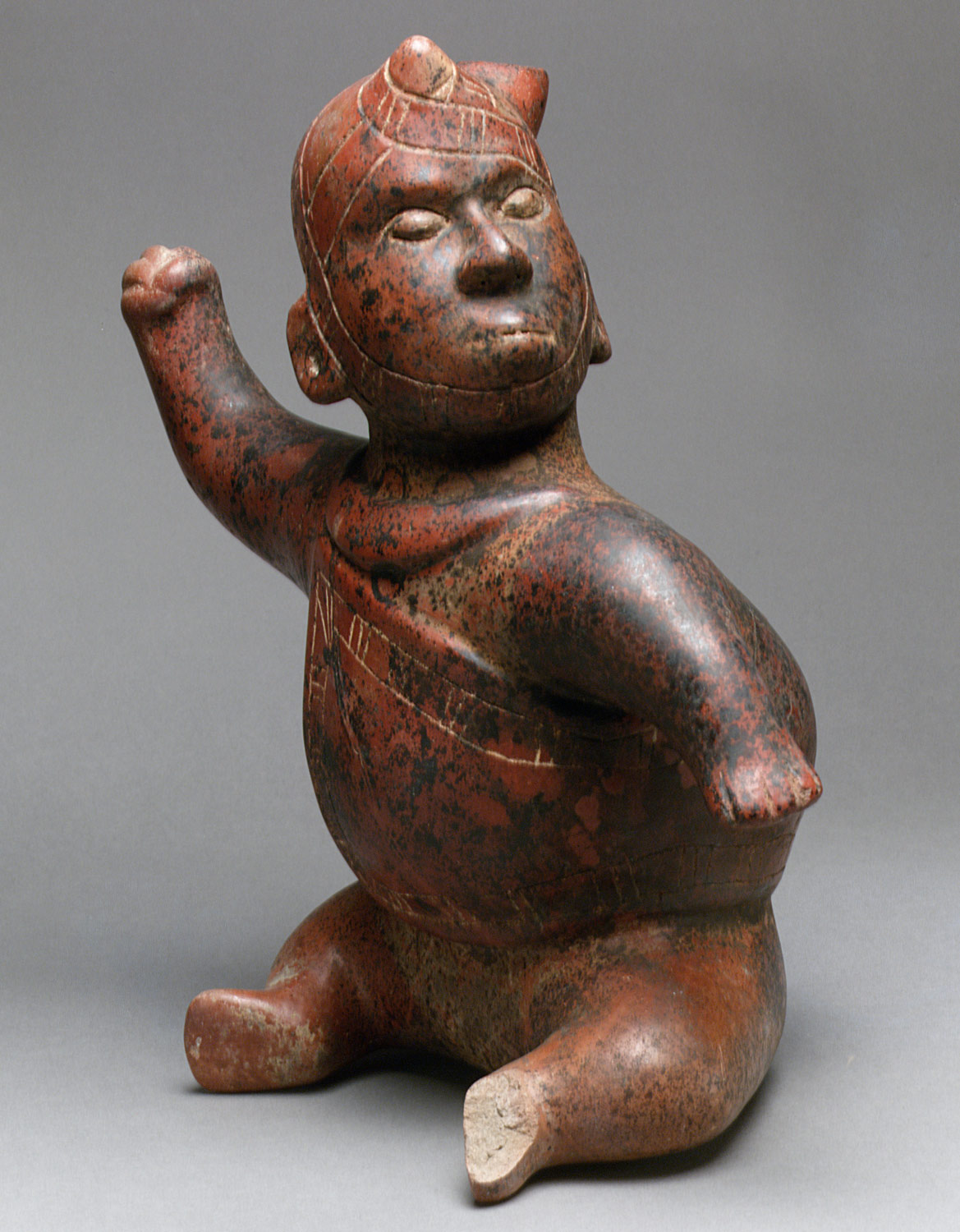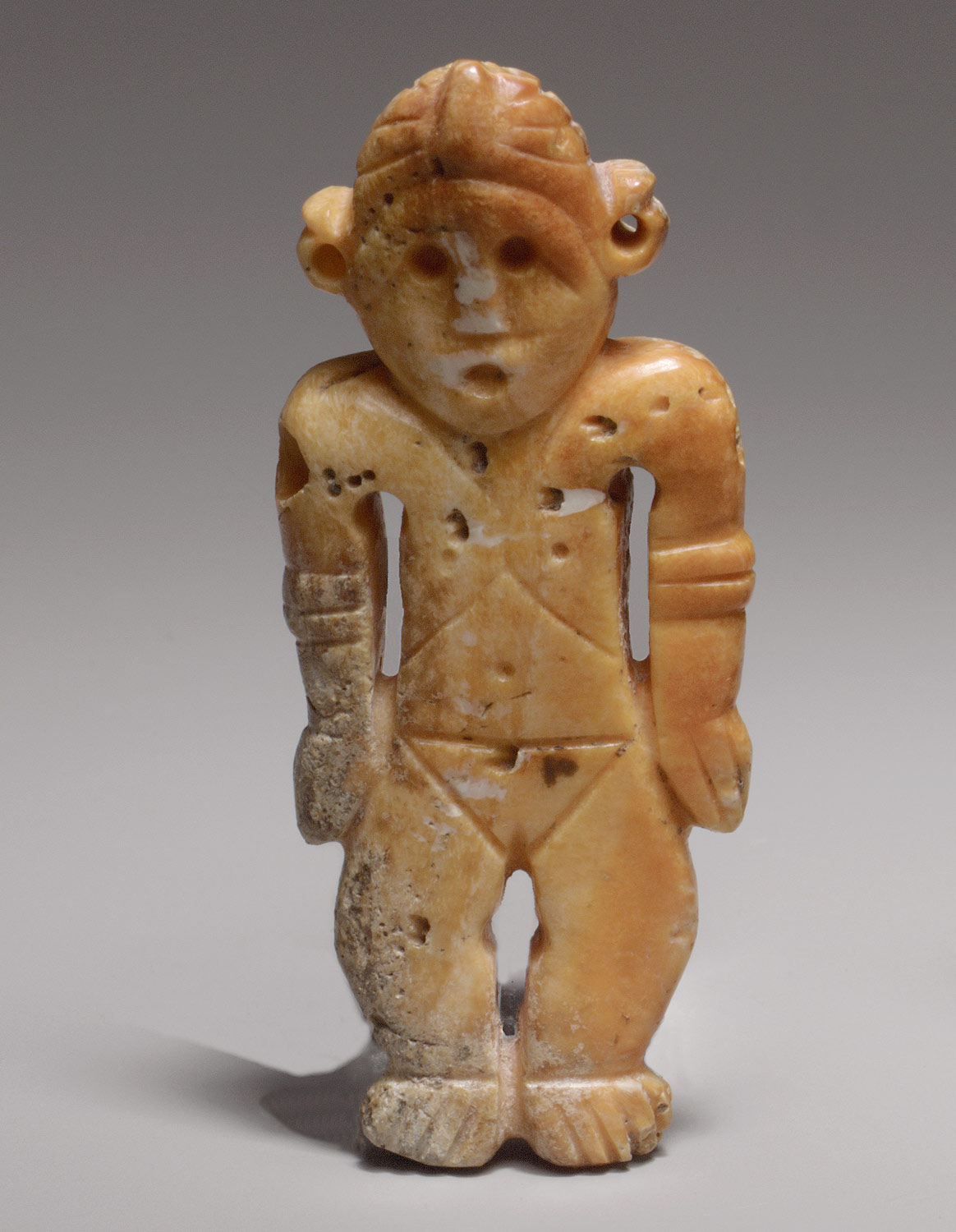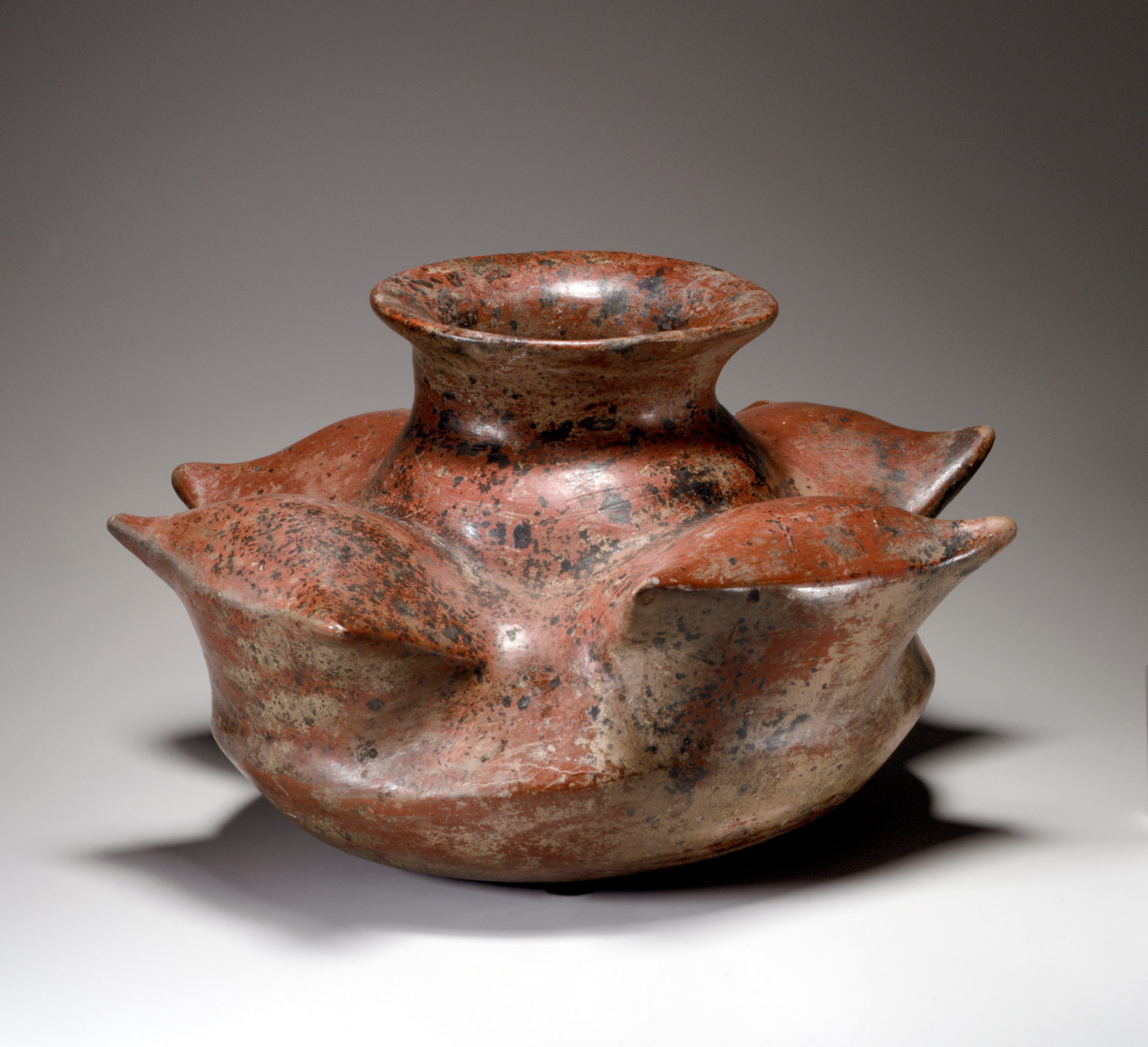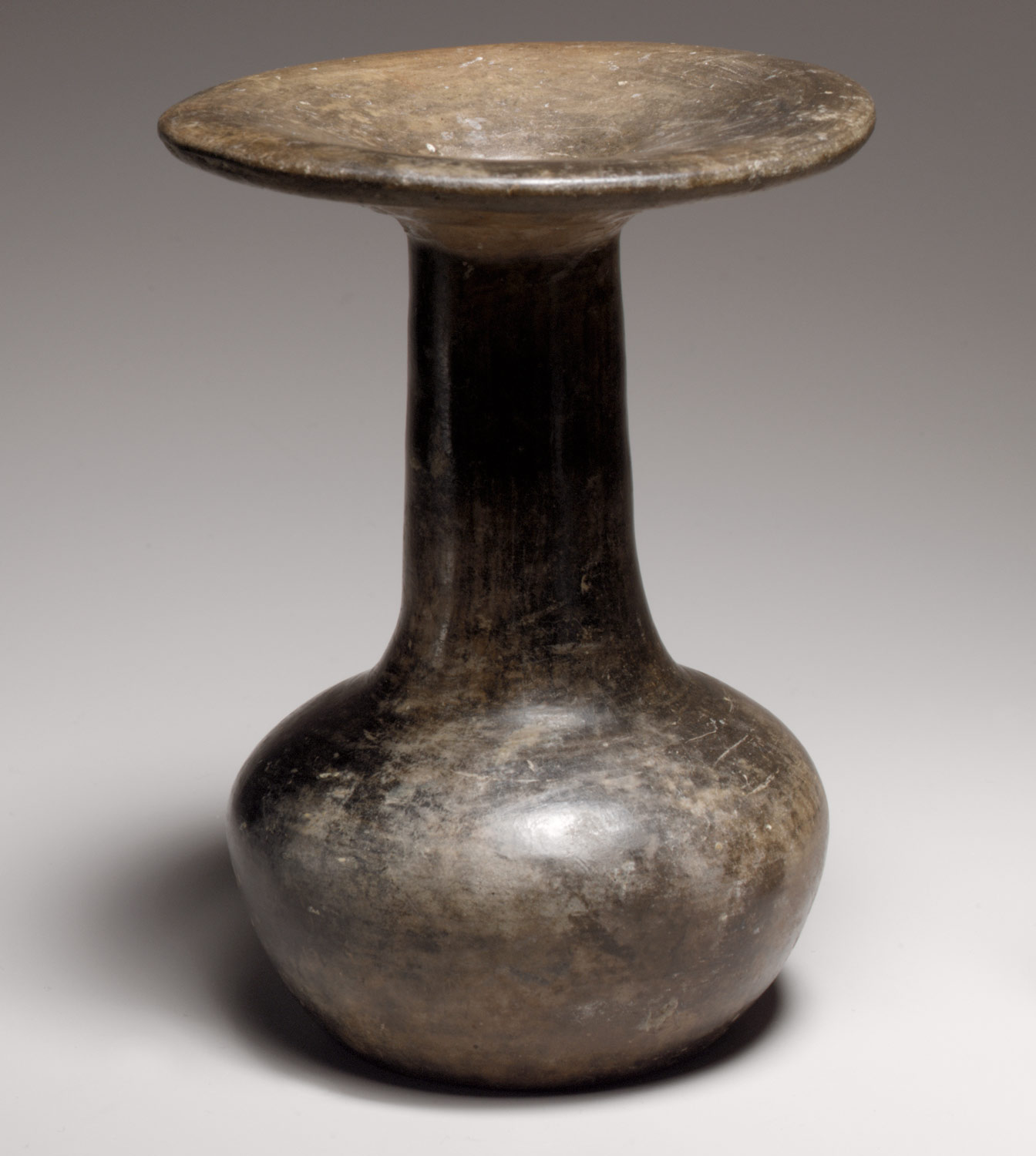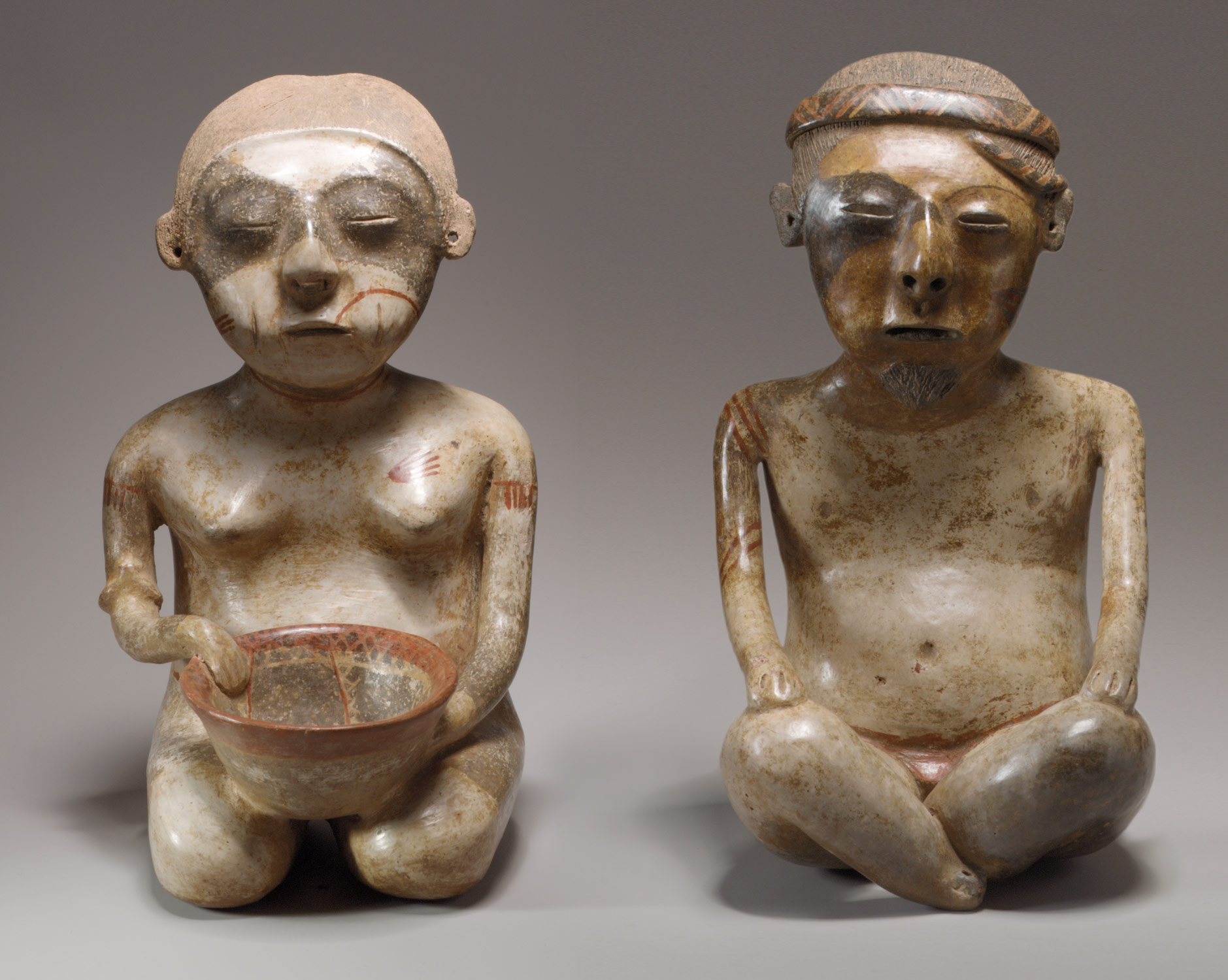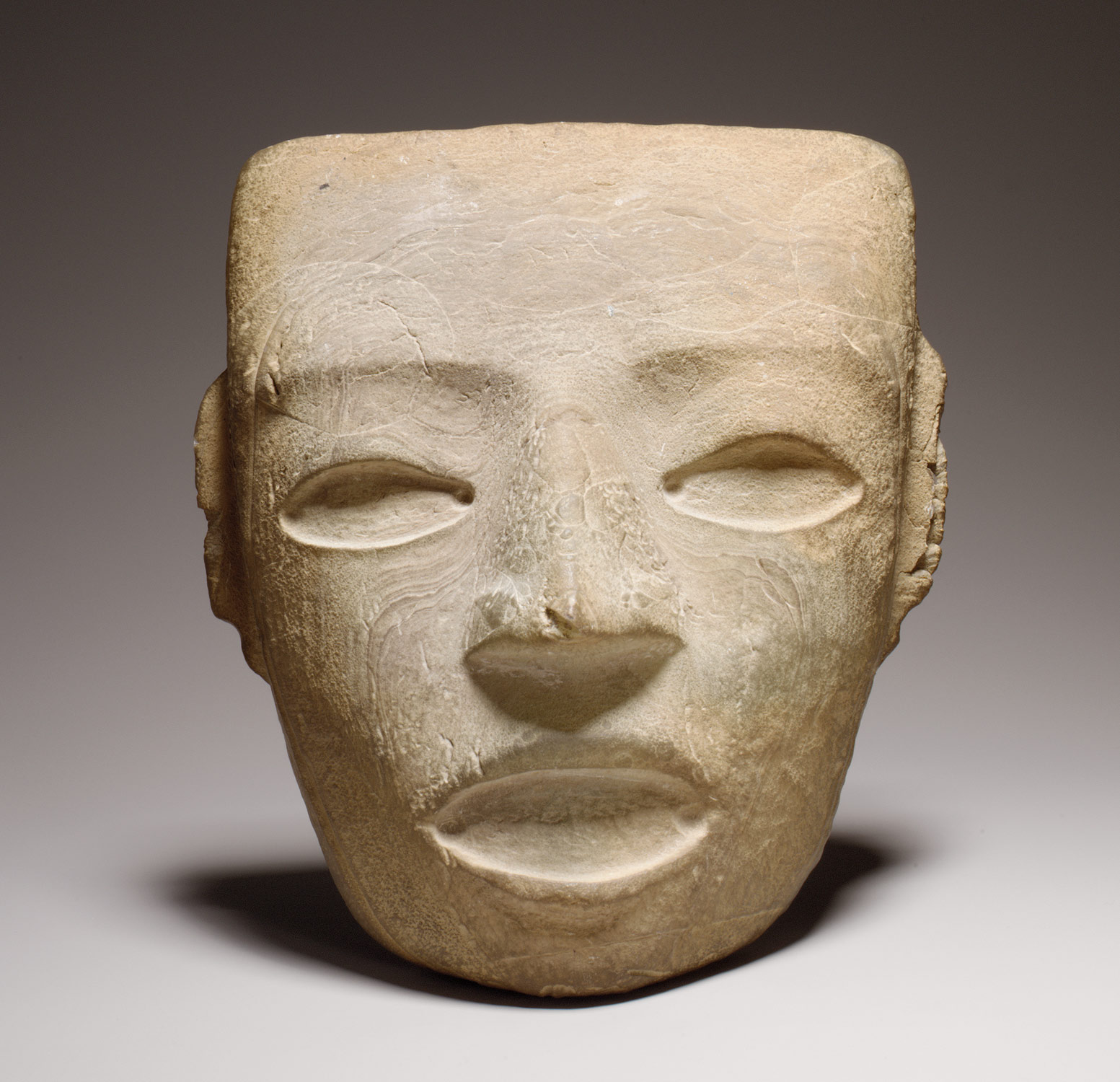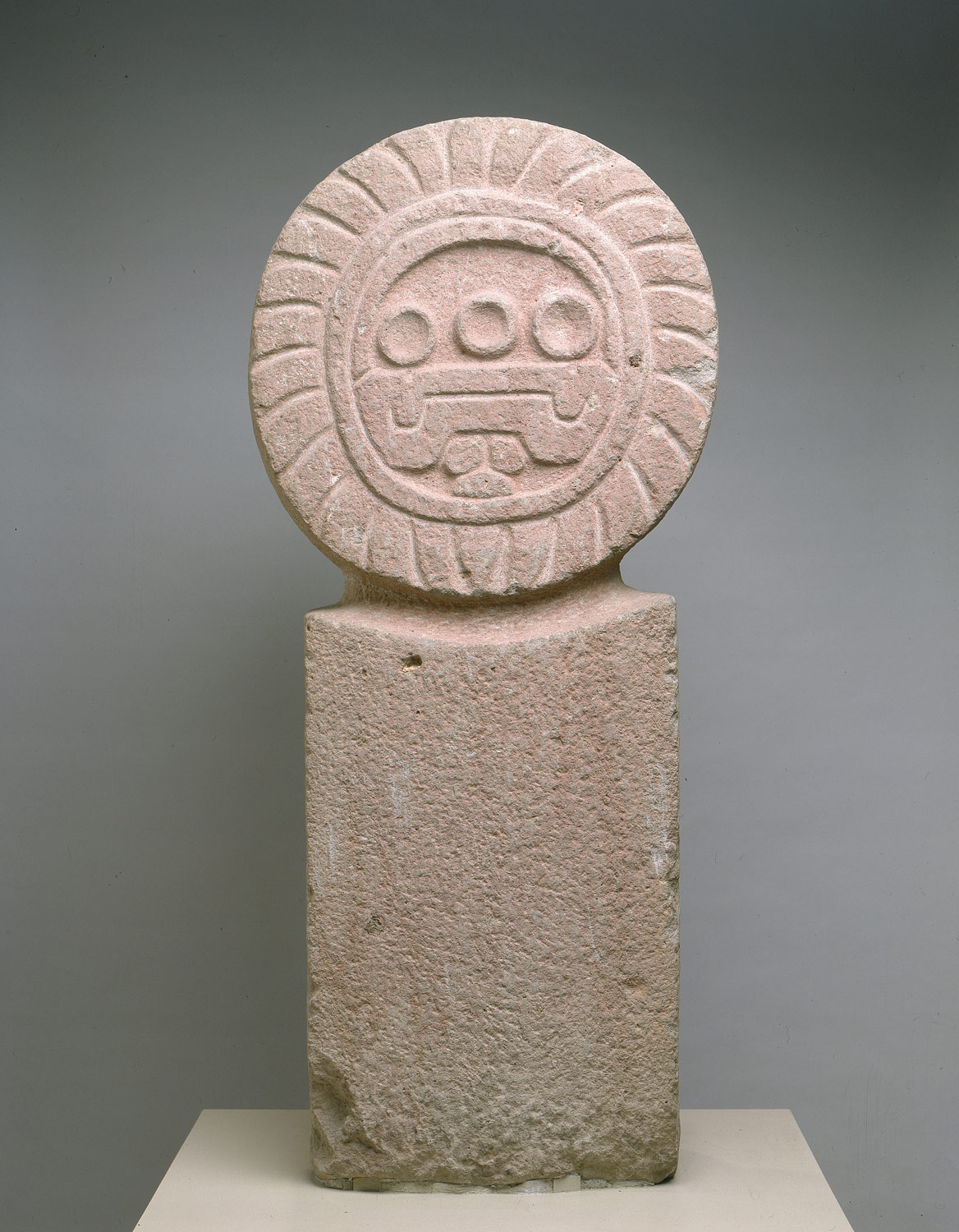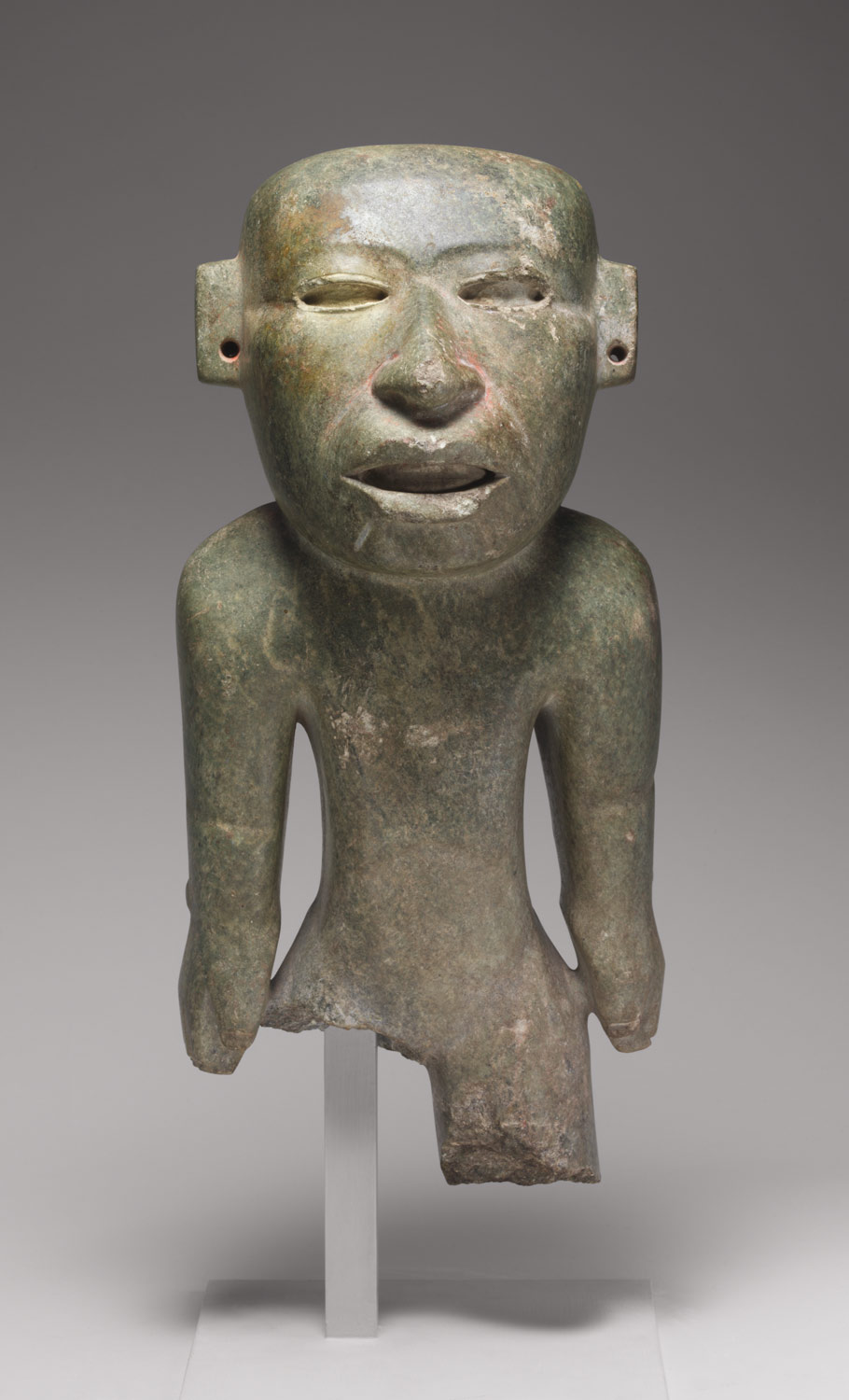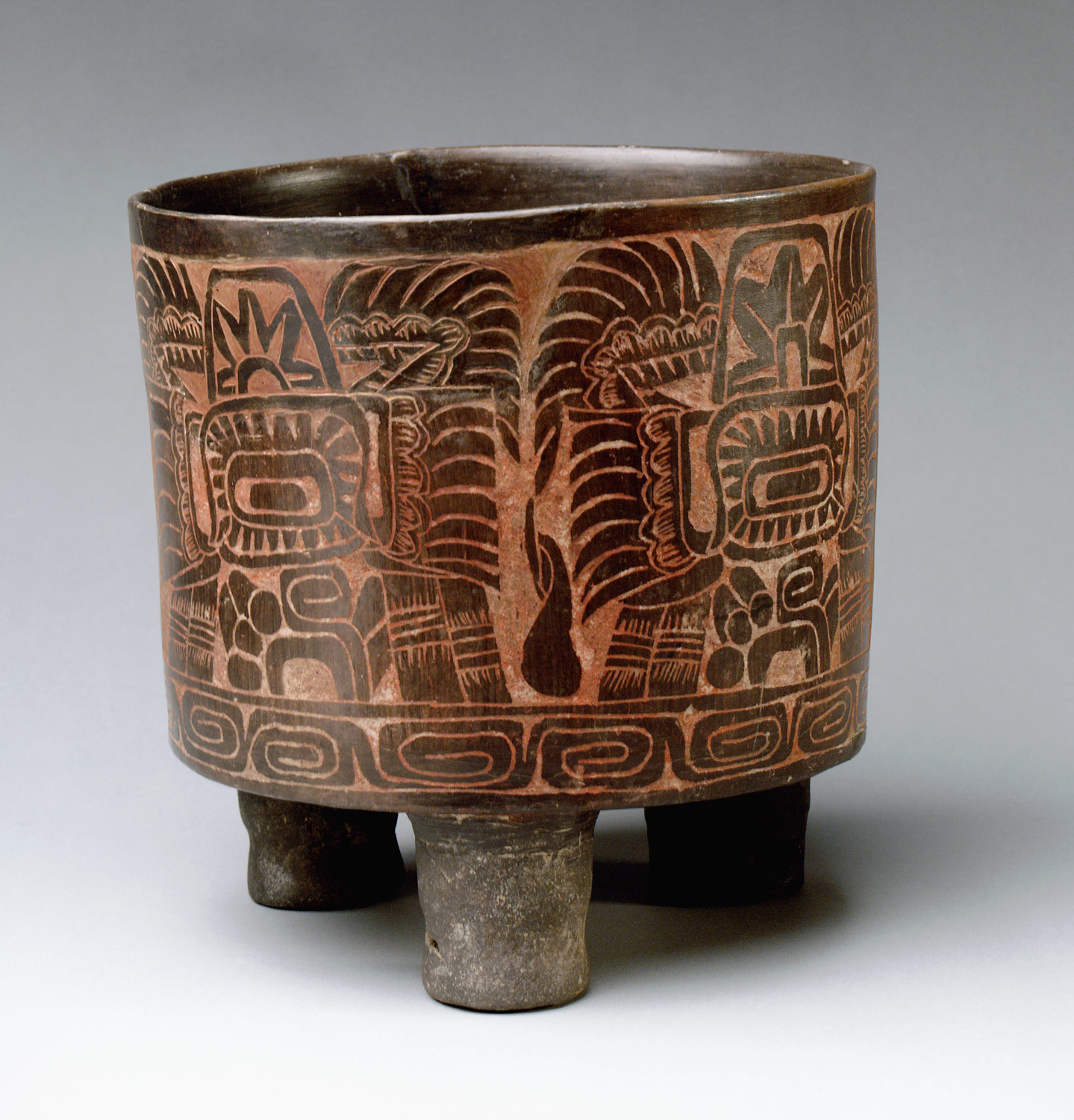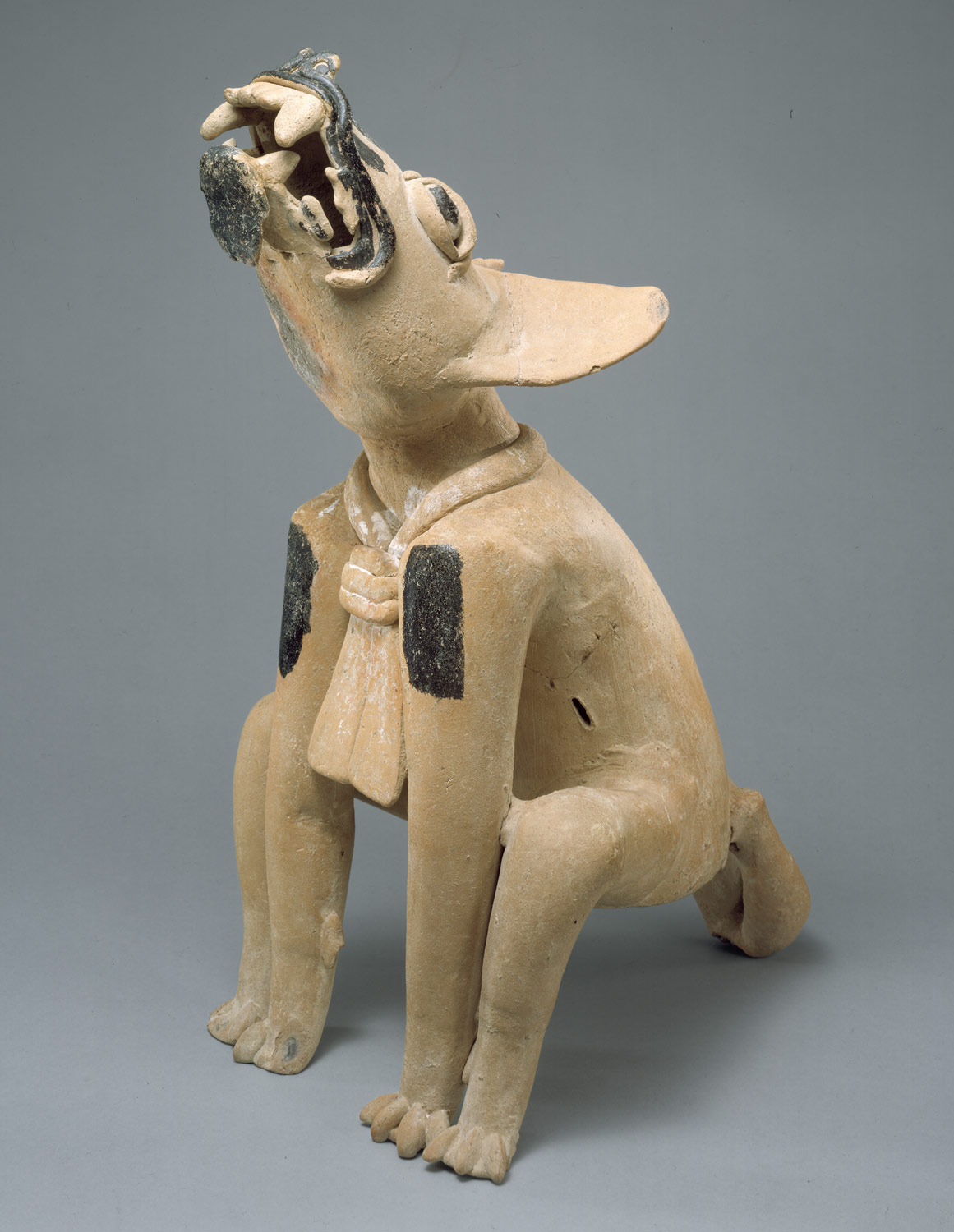Teotihuacan becomes the dominant political and economic force of Mesoamerica. Boasting the largest urban population in the region, it controls the nearby and highly important obsidian mines. Teotihuacan apparently sends a military force into the Maya region at the end of the fourth century. The hilltop center of Monte Albán expands to control the Valley of Oaxaca. Farther to the west, in Colima, Nayarit, and Jalisco, lively and elegant ceramic sculptures are placed in shaft tombs. On the Gulf Coast, inheritors of the Olmec tradition develop a still poorly understood hieroglyphic writing distinct from the Maya and Zapotec systems.
Mexico, 1–500 A.D.
Timeline
1 A.D.
125 A.D.
CENTRAL MEXICO
GULF COAST
WESTERN MEXICO
SOUTHERN MEXICO
125 A.D.
250 A.D.
CENTRAL MEXICO
GULF COAST
WESTERN MEXICO
SOUTHERN MEXICO
250 A.D.
375 A.D.
CENTRAL MEXICO
GULF COAST
WESTERN MEXICO
SOUTHERN MEXICO
375 A.D.
500 A.D.
CENTRAL MEXICO
GULF COAST
WESTERN MEXICO
SOUTHERN MEXICO
Overview
Key Events
-
ca. 1 A.D.
Teotihuacan in the Basin of Mexico grows rapidly as rural populations move in, possibly coerced into doing so.
-
ca. 50 A.D.
The grid pattern of the city plan is established at Teotihuacan and the focus of sacred building is on the so-called Street of the Dead, where permanent construction of public architecture (such as three-temple complexes) begins. The Pyramid of the Sun, the largest structure ever raised in ancient Mesoamerica, is initiated over a narrow, tunnel-like cave adjacent to the street. Caves are associated with the origins or emergence of life in Mesoamerican thought. The city becomes a pilgrimage center.
-
ca. 50 A.D.
Monte Albán grows quickly and dominates, apparently by force, the Valley of Oaxaca. Much of the mountaintop on which it is built is leveled to form the great Main Plaza; temples and palaces on its perimeter are constructed or enlarged and surfaced with white lime plaster. Tomb construction and burial contents become more elaborate.
-
ca. 150 A.D.
The Pyramid of the Moon at the north end of Teotihuacan’s Street of the Dead is enlarged, and the axis of the city center shifts south with the building of a large permanent market structure, the Great Compound, and a religious/governing center, the Ciudadela. Teotihuacan is a major marketplace, and controls much of the essential trade in obsidian in central Mexico.
-
ca. 150 A.D.
A relief-carved stela found at La Mojarra in the Papaloapan River drainage of Veracruz depicts a grandly dressed personage and bears a long inscription in what is thought to be an Epi-Olmec script.
-
ca. 200 A.D.
The talud-tablero, a particular architectural profile used on sacred temple platforms, appears on the Temple of the Feathered Serpent in Teotihuacan’s Ciudadela. The talud-tablero profile will be widely used in the city and elsewhere in Mesoamerica. Teotihuacan controls the Basin of Mexico.
-
ca. 200 A.D.
Building J at Monte Albán incorporates the “conquest” reliefs believed to name the numerous Oaxaca locations claimed as subject to the hilltop city. I-shaped ballcourts are present at Monte Albán and the ballgame is thought to have had a role in resolving disputes.
-
ca. 250 A.D.
Wall paintings, done in a fresco technique, embellish temples near the Pyramid of the Moon at Teotihuacan; eventually, frescoed walls appear throughout the city. Permanent apartment compounds—walled, one-story building groups that become the standard residential unit—are initiated. Many are occupied by the city’s hundreds of craftsmen. Future building efforts center on residential construction; about 2,000 apartment compounds will make up the city.
-
ca. 250 A.D.
The shaft tombs of Jalisco, Nayarit, and Colima in the west of Mexico are no longer made on the grand scale of previous centuries.
-
ca. 378 A.D.
In Guatemala’s Petén, the ninth recorded ruler of the Maya city of Tikal, Chak Toh Ich’ak I (Great Jaguar Claw), dies on the day a foreign warrior named K’ak Sih (Fire-Born)—thought to be from Teotihuacan—arrives. The following year, a new ruler is invested at Tikal, Yax Ain I (First Crocodile), who has strong ties to Teotihuacan, and there is much subsequent Teotihuacan presence at Tikal.
-
ca. 400 A.D.
Architectural details and ceramic vessel forms at Kaminaljuyú in the southwestern Maya highlands and in the Tiquisate region of Guatemala’s Pacific coast indicate a strong Teotihuacan presence.
-
ca. 450 A.D.
Royal tombs at Monte Albán contain numerous large, complex funerary urns of ceramic. The urns are thought to depict deceased ancestors. A specific neighborhood, known as the Oaxaca barrio, exists in Teotihuacan for people from Monte Albán.
Citation
“Mexico, 1–500 A.D.” In Heilbrunn Timeline of Art History. New York: The Metropolitan Museum of Art, 2000–. http://www.metmuseum.org/toah/ht/?period=05®ion=cam (October 2000)
Related
Map
